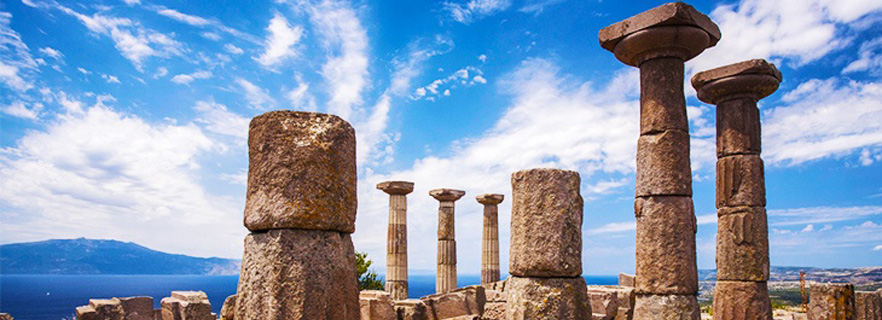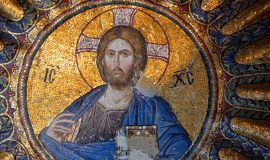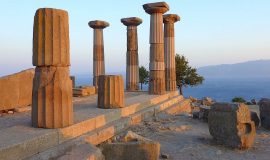 Assos Ancient City
Assos Ancient City
It is one of the antique cities that have been staying up to the sun. History of ancient city of Assos, which welcomes the famous philosopher Aristotle in the land while Tarihe is witnessing, It goes back to the 6th century. The ancient city of Midilli Island was built right across from the sea and the terraces were descended from the stairs.
The best place to start exploring Assos is Behramkale Village, where you can feel yourself at a different time with unspoiled texture. There are many historical places to visit in Assos, where Aristotle founded the school of philosophy. The Hüdavendigar Mosque in Behramkale Village, the 600-year-old Hüdavendigar Bridge on the Tuzla Creek, the walls of Athena Temple, Acropolis, Nekrapol, Gymnasium, Amphitheater, Hammam and Agora, Apollon Smitheion Temple on the way to Babakale are among the main ones. Is taking place.
Athena Temple
Athena (Minerva) is the Goddess of the productive intelligence and just wars and protects the country from attacks. Athena, daughter of Zeus and one of the 12 Olympus Gods, was the protective goddess of the city. Civilization, crafts and the guardian of agriculture were the creators of the stiffener; The horses are the first tamed. The snake and the owl are among the symbols of the Goddess. The goddess Athena is still watching you from the top. The other name of Athena is Pallas. In many cities, it is possible to encounter temples built in his name.
The Temple of Athena in Assos was founded at 236 meters, the highest point of the Acropolis at 530 BC. The Athena temple is the most valuable asset of the ancient city. It is worth seeing because of the beautiful sunset view. Despite being in the Doric style, there is an underground frieze that is characteristic of the Ionic style. The sides are in the pepiteros plan (surrounded by a series of columns), surrounded by three columns, front and back six columns.
The two-step podium was able to reach daylight. The Hellenistic period pebble mosaic flooring and altar found in the main part of the excavations later disappeared. The reliefs of the temple are in the archaeological museums of Paris, Boston and Istanbul. Doric hoods, column bases and other architectural remains can be seen in the surroundings.
Agora
The agora is called a wide open space in the form of a ring, around which all political, religious, commercial activities of the city are carried out, for example around the public buildings where things like elections are held. It is usually replaced by city centers.
In Assos the Agora is located on the southern slope of the Acropolis. There were formal formalities around the time. The Temple of Agora, II. Remains from the century can be seen. Unfortunately, there is no information about the original plan because this structure was later converted to church.
Gymnasium
The gymnasium is a sports building where young people receive physical and social education, and as much as the agora part in a city. The gymnasium in Asos was built in the II century after the Millattan. It is between the agora and the west gate. The four sides are shaped like a stone paved courtyard surrounded by columns in Doric style. Has dimensions of 32 × 40 meters. The semi-circle steps in the entrance are unfortunately not reached as it is in many historical monuments. There is a church from the Byzantine period to the north and a cistern to the south.
Bouleuteiron (Parliament)
Bouleuterion (the parliament building) means the structure of the city council, which made important decisions about city life. To the east of the Assyrian Antique City's Boulevard of Agora Bouleuteiron consisted of podiums, sculptures, and small monumental structures.
Theater
The Assos Theater, which was built on the southern slope of the Temple of Athena in the II century after Millattan, was completely protected until the last century. Nowadays it is tried to be made available with restoration works. The theater, which was renovated in the Roman period, is thought to have been built in the form of a horse rally in accordance with the traditional Greek theater plan. From time to time, activities related to Assos are performed in this theater.
Necropolis
Necropolis; It is derived from the words "necro" (measured) and "police" (city) and is used to describe cemeteries in antiquity. It is usually located outside the city, sometimes near the main door. Hellenistic and Roman period Assos Necropolis near the ancient city was established. Along the road connecting the western and eastern gates of the necropolis, graves and monuments lined up. To the north of the west gate, there are tomb remains of Publius Varius.
Stoa
The stoaa, which are mostly in the agoral settlements, are made up of columns and columns covered with poplar, and a longitudinal wall is made of one or more columns and a roof covering them. They are used in religious ceremonies, political and philosophical meetings, commercial and cultural events. The Philosophical Stoa School received the name of Stoa, meaning "the colonnaded gallery", because it was set up in a place where the walls were painted with fancy columns.
Stones in Asos; One in the north of the Agora and the other in the south. After the Millattan in the north III. At the end of the century or II. It is thought to have been built at the beginning of the century. It is a two-storey doric style. The lower floor is decorated with rectangular panels between columns. On the second floor wall, holes can be seen where the wooden logs forming the ceiling are placed. The southern stoa, which was from the same period, had three floors and 13 floors on the middle floor. On the lower floor was a cistern and 13 hammams.
Behramkale Bridge
XIV. It is made from local stones on the Tuzla Stream in a century. Side arches with pointed arches 7 m., Central eye 15 m. Although it is said to be high; It is not possible to see this rise because the tea bed is full. Bridge is available today. The new bridge is open to vehicle traffic and has accommodation facilities in the immediate vicinity.
Hüdavendigar Mosque
XIV. It is a structure established at a high place among the ruins of Assos during the 1st century, the 1st Murad period. It is interesting that Byzantine and Roman period remains were used. The interior of the leaves decorating the gypsum mihrab, decorated with relief rumiler. There are milks on the sides of the niche niche. The main room is covered with a dome that sits in an octagonal kasnagh. The two sides of the last congregation site are closed and the lowered arch is covered with a longitudinal vault in the middle. There is no minaresi. It is still used as a mosque when it is in need.


 Assos Ancient City
Assos Ancient City












